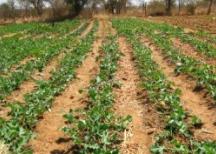Conservation Legislation in South Africa is comprehensive and decrees that many activities require Environmental Impact Assessments (EIA) and Integrated Environmental Management controls. Mountains are not seen as a separate category of land over which specific legislation would apply. Recently new unrelated legislation has created legislative loopholes that allow the indiscriminate construction of roads into the Cape's important mountain catchments for the use of recreational vehicles for tourism.
Haphazard mountain tourist activities in South Africa
Tourism and the Conservation and Maintenance of Biological and
Cultural Diversity
Case Study: Haphazard Mountain Tourist Activities in the South
African Cape Folded Mountains Facilitated by Flawed Legislation
Introduction
Conservation Legislation in South Africa is comprehensive and
decrees that many activities require Environmental Impact
Assessments (EIA) and Integrated Environmental Management
controls. Mountains are not seen as a separate category of land
over which specific legislation would apply. Recently new
unrelated legislation has created legislative loopholes that allow
the indiscriminate construction of roads into the Cape's important
mountain catchments for the use of recreational vehicles for tourism.
Biogeographical Background
The Cape folded mountains of the Southern and South Western Cape
includes 38 ranges totaling 21 000 sq. km. The sandstone and
shale, tilted and folded formations, create outstanding mountain
landscapes and diverse biotic habitats. These mountains are the
source of a limited supply of pure silt-free water that is the
life-blood of human activities in the Cape. They are also the
habitat of about 6000 of the 8800 species of the Cape Floristic
Kingdom. The ranges are narrow and long, which enables the
landowners and infrastructural agencies to easily exploit the
mountainous area for their envisaged activity. The unspoilt
mountain landscapes are becoming a significant tourist attraction,
whilst the diversity, beauty and scientific value of the flora
attract both national and international tourists and scientists.
Policy Background
An interdepartmental investigation (Ross Report 1961) into the
importance of South Africa's major mountain catchments informed
the Mountain Catchment Areas Act (MCAA, 1970). A significant
recommendation was that the State purchases and takes title from
private landowners of all South Africa's mountain catchment land.
This was carried out for a number of years, but abandoned due to
cost and other priorities These acquisitions resulted in the
establishment of at least some additional protected areas in the
mountains, yet 85% of all mountain land in South Africa remains in
private or communal ownership.
A government White Paper on Mountain Policy addressing mountains
as a separate land entity was produced in 1991 after various
submissions and workshops. This has subsequently become lost in
the political turmoil of the 1990s. Through socio-ecological
zoning it was envisaged that the then relatively pristine mountain
environments would be protected from inappropriate utilization.
The new Municipal Demarcation Act (1998) and Municipal Structures
Act (2000) decrees that all land including mountains falls within
the ambit of local municipal structure plans, many of which don't
currently exist. This means that mountains are likely to fall
prey to spot zoning. They are now merely an entity to serve the
economic needs of a local community - a non-holistic approach to
arguably the country's most important biome.
Specifically these acts have undermined conservation legislation
and now the construction and upgrading of roads on mountains can
in many circumstances fall outside the controls of EIA
regulations. For example if a landowner wishes to establish a
tourist resort in the mountains the roads to the site are subject
to EIA. However, if a landowner is making a road for agricultural
purposes such as wild flower harvesting an EIA is not required.
Landowners are using this loophole to make poorly planned, poorly
constructed and unmaintained roads into important mountain
catchments and wilderness areas. These roads are in fact mostly
being used for revenue creating tourism in recreational vehicles.
Socio-economic background
The current exploitation of Cape mountain environments is
aggravated by various factors:
- At the hub of the problem is that the majority of mountain land
is privately owned. Traditionally many farmers have considered
their mountain land as "waste land", have not developed a
conservation ethic, and are now being made aware of the economic
value of this land for agri-tourism by agricultural authorities
who are actively encouraging this practice. Conservancies are
being formed but many landowners have yet to develop an ethic of
stewardship over their mountain properties (Blignaut 1993).
- The unpredictable weather patterns, fluctuating agricultural
produce prices and the abandonment of government subsidies means
that landowners may need to augment their income.
- Due to our undervalued currency, foreign tourists who
appreciate our natural environment and good infrastructure are
coming in increasing numbers. The unfavorable exchange rate is
also keeping South Africans in their country causing an increasing
demand for recreational activities in natural areas. All this
creates a ready market for the mountain environment entrepreneur.
- In 2001 legislation was promulgated that severely curtails the
use of recreational vehicles on South Africa's coastline. This has
immediately begun to increase pressure for 4x4 trails in mountainous areas.
- The exploitation syndrome is heightened by the insecurity of
many farmers. This is caused by the on-going murders of farmers in
South Africa by criminal elements, and the Zimbabwe racial
land-grabs scenario from their own citizens. The tendency is no
longer to perceive the farm as a long-term investment. This
justifies short-term gain from mountain resources.
- There is a lack of adequate funding by central government for
effective catchment and biodiversity management by the
conservation authorities. Consequently, they are attempting to
augment their funds by developing tourist infrastructure in their
nature areas, including 4x4 roads in protected mountains.
Effects of haphazard road construction in the Cape mountains
"The Cape mountains harbor very sensitive habitats with
habitat-specific and highly localized endemic plant and
animal species. It is not unusual to find species that are
so extremely localized that all the individuals are
restricted to a single little seepage area, drainage line
or small patch. Any road activities into these mountains
could wipe out an entire species or easily destroy a
significant part of the population of a rare species, and
without doubt will cause soil erosion."
- Dr Schutte-Vlok (ecologist)
Probably the most degrading feature of any mountain landscape is a
poorly planned, badly constructed, eroding and non-maintained
road. Moreover, vehicles do not stay on the ill-defined roads.
Where they become steep and rapid erosion occurs, they branch out
in all directions substantially increasing erosion and species destruction.
South Africa has received a substantial GEF grant to carry out the
CAPE action plan for the environment to conserve its exceptional
floral biodiversity. The clearing of invasive alien vegetation is
a priority. Also the government is spending huge sums on the
internationally acclaimed Work for Water Program clearing invasive
alien vegetation out of the mountain catchments. Yet
simultaneously vehicles on these new tracks into the heartland of
pristine mountain land and catchments for essential water
resources, are transporting seeds.
There is no control on the number of vehicles or people using
these tracks on private land into the source of our water supply.
Consequently we can expect a rapid deterioration in water purity
from the accumulative effects of these practices.
The Cape mountains do not possess a large wilderness core and no
buffer regions. A significant destructive influence of these
mountain tracks is the loss of the limited mountain wilderness.
Wilderness is an optimal protective environment for biodiversity
the most sort after need of nature lovers, both will be very
adversely affected by vehicular access to these areas by noisy
picnickers, pollution and ruined landscapes.
Future Scenario
The Cape is fortunate to have sparsely populated pristine mountain
areas with extraordinary biodiversity and pure water. The picture
could change adversely in a few years. The question is whether the
politicians appreciate what we have and whether the relevant
authorities will be able to act fast enough to preserve this unique asset.
References
Ross Report (1961). Report of the interdepartmental committee on
the conservation of mountain catchments in South Africa.
Department of Agriculture and Technical Services. Pretoria.
Mountain Policy White Paper (1991). Proposals for a national
policy and strategy for the conservation and use of mountain areas
in South Africa. Department of Environment Affairs. Pretoria.
Work for Water Program (1995) Government action plan to eliminate
alien invasive vegetation in South Africa's mountain catchments.
Department of Water Affairs.
Cape Action Plan for the Environment (2000). A biodiversity
strategy and action plan for the Cape Floral Kingdom. Trevor
Sandwith [email protected]
Blignaut P.E. (1993). Proposals for a Land Heritage Trust for the
Mountains. South African Journal for Surveying and Mapping. August.
Blignaut P.E. (1995). Framework for a socio-ecological zoning
management policy for the conservation and sustainable use of the
mountainous areas of South Africa. PhD Thesis.
Peter E. Blignaut Ph. D.
Southern African Mountain Environment Consultancy
14 Kreupelbosch Way, Constantia 7806.
South Africa
Email: [email protected].
- Log in to post comments
- 367 reads



































